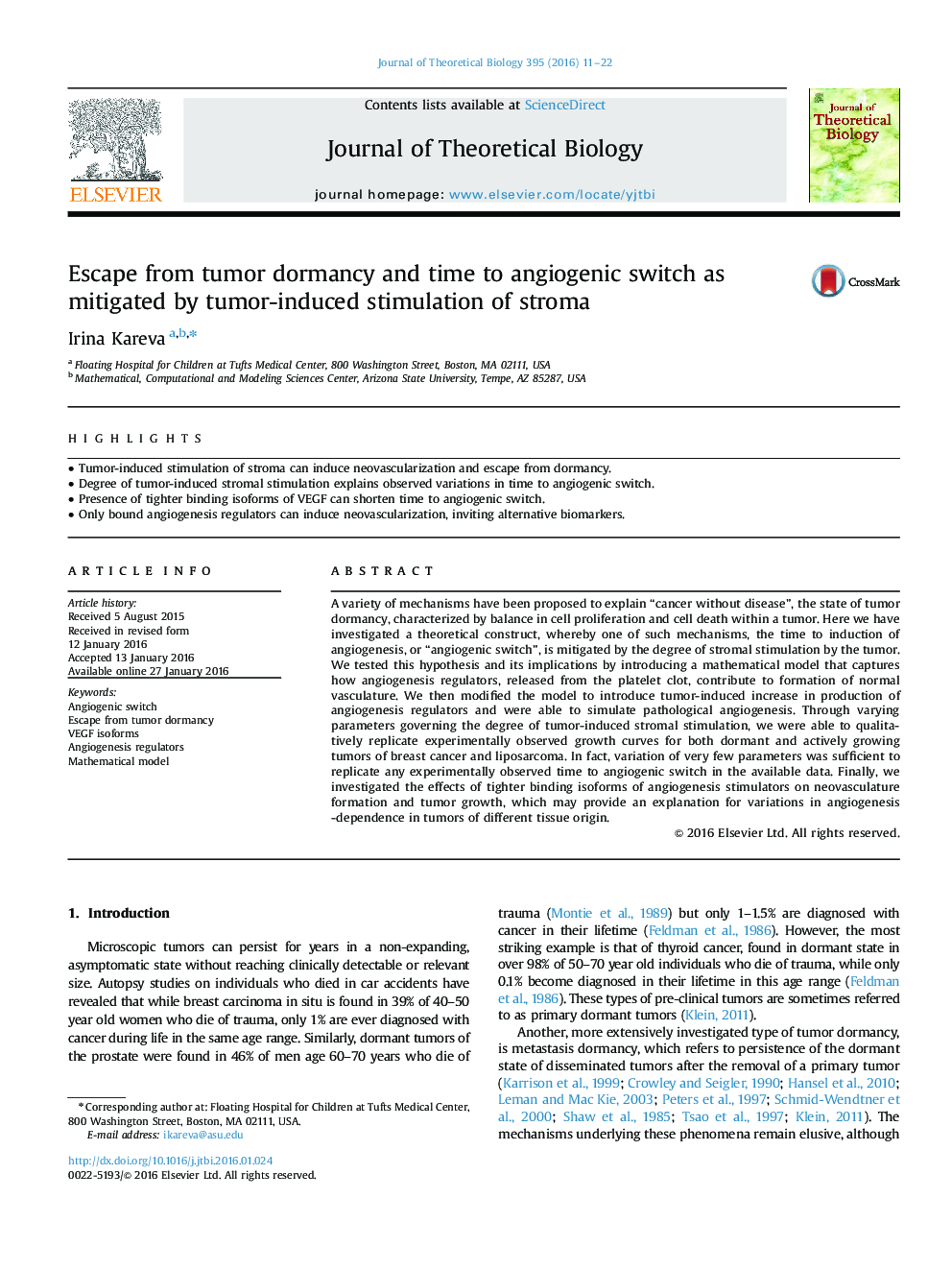| Article ID | Journal | Published Year | Pages | File Type |
|---|---|---|---|---|
| 4495832 | Journal of Theoretical Biology | 2016 | 12 Pages |
•Tumor-induced stimulation of stroma can induce neovascularization and escape from dormancy.•Degree of tumor-induced stromal stimulation explains observed variations in time to angiogenic switch.•Presence of tighter binding isoforms of VEGF can shorten time to angiogenic switch.•Only bound angiogenesis regulators can induce neovascularization, inviting alternative biomarkers.
A variety of mechanisms have been proposed to explain “cancer without disease”, the state of tumor dormancy, characterized by balance in cell proliferation and cell death within a tumor. Here we have investigated a theoretical construct, whereby one of such mechanisms, the time to induction of angiogenesis, or “angiogenic switch”, is mitigated by the degree of stromal stimulation by the tumor. We tested this hypothesis and its implications by introducing a mathematical model that captures how angiogenesis regulators, released from the platelet clot, contribute to formation of normal vasculature. We then modified the model to introduce tumor-induced increase in production of angiogenesis regulators and were able to simulate pathological angiogenesis. Through varying parameters governing the degree of tumor-induced stromal stimulation, we were able to qualitatively replicate experimentally observed growth curves for both dormant and actively growing tumors of breast cancer and liposarcoma. In fact, variation of very few parameters was sufficient to replicate any experimentally observed time to angiogenic switch in the available data. Finally, we investigated the effects of tighter binding isoforms of angiogenesis stimulators on neovasculature formation and tumor growth, which may provide an explanation for variations in angiogenesis -dependence in tumors of different tissue origin.
